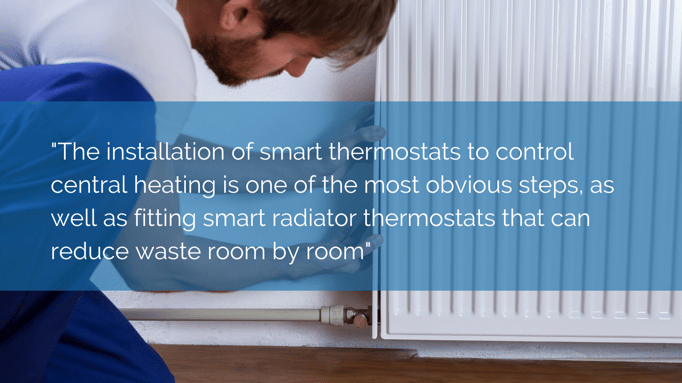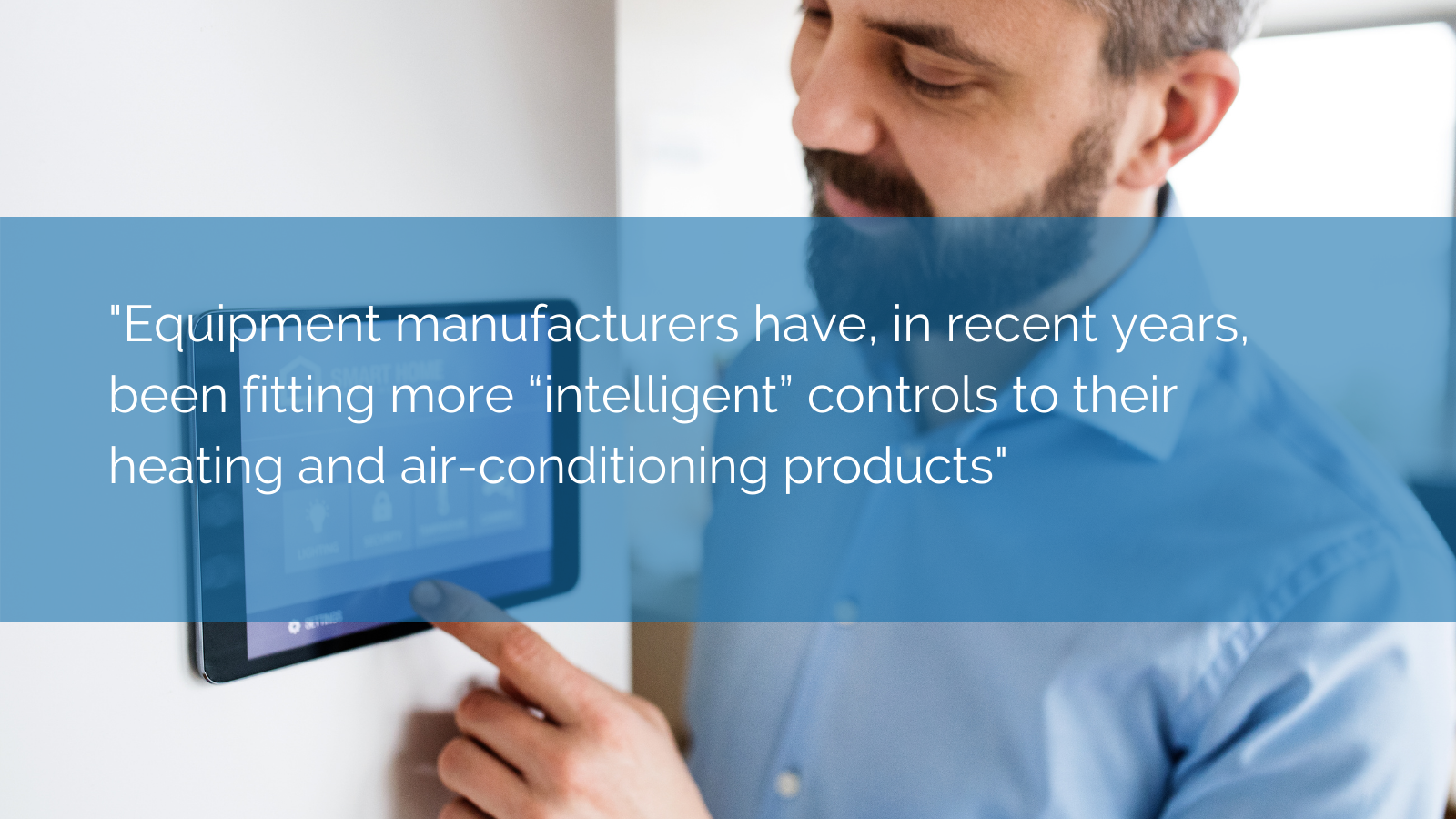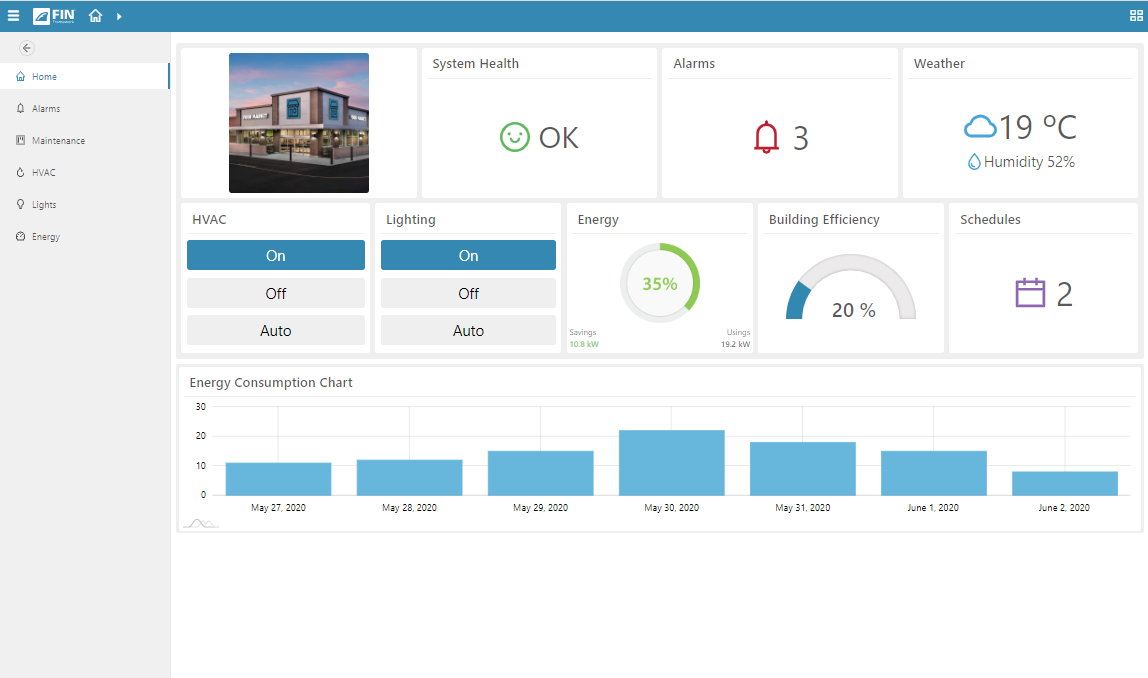The home of smart buildings, smart equipment and IoT

In homes, the installation of smart thermostats to control central heating is one of the most obvious steps, as well as fitting smart radiator thermostats that can reduce waste room by room; devices such as the Radbot smart actuator offer a savings of over 20% with a payback of less than 2 years! In small commercial buildings the percentage savings that can be made are often greater, since many have inadequate controls and little or no management of the configuration and settings required to optimize them. Whilst many building owners and operators, such as major retail and leisure chains, have made investments to reduce the waste of energy, the vast majority of smaller buildings have yet to be tackled.

The two fundamental problems faced by organizations wanting to provide solutions is how to persuade the building owner/operator of the benefits and how to get them installed and commissioned cost-effectively. Until now, the cost of installing fully programmable building management systems with sophisticated features for logging the environmental data and reporting on it, as well as algorithms to optimize control, has been too high for the majority of smaller buildings. The complexity of installation and commissioning also tends to be beyond the competencies of the contracting channels that install the HVAC and lighting equipment. A third, very practical issue, is that retrofitting additional sensors and control devices into an existing occupied building is relatively expensive (compared to installing in new buildings), because running cables around internal spaces is disruptive to occupants and must therefore be carried out after opening/working hours.
The situation is not all doom and gloom though. Equipment manufacturers have, in recent years, been fitting more “intelligent” controls to their heating and air-conditioning products. Unfortunately, these typically only control the supplier’s own equipment. This does not help deliver an easy-to-manage, overall site solution. No user wants to juggle multiple user interfaces and smartphone apps just to manage their building, which is why a more holistic solution is needed.
Another positive change over the last 5 years or so has been the wider availability, and falling costs, of wireless devices that can reduce the installation time and disruption to operations. The newer wireless protocols such as LORA offer a better balance of range reliability and battery life than previous generations, making these a far more attractive proposition for retrofit solutions. Far less common are wireless control modules for switch lighting and other electrical loads such as door curtains, VRF units etc. but these are also very useful in reducing on-site costs.
Another problem that multi-site building operators face when seeking to improve the management of their portfolios is the cost and complexity of remote connectivity. Conventionally this is solved by installing and configuring a VPN (Virtual Private Network) to ensure secure connection from the site to the management supervisory application located at Head Office or, increasingly, in the cloud. The other approach commonly taken is the use of a mobile network (cellular) connection over 3/4G, but this brings with it other issues such as signal reliability, low bandwidth, random disconnections, on-going costs and set-up complexity. On smaller sites these issues make remote management of the building too costly to implement so adjustment of settings and oversight of the controls is left to local managers, with very variable results.

The ideal solution for controlling small buildings is a low cost, easy-to-install and commission device that can talk to and control all the different devices in the building, preferably wirelessly, record their data, and securely connect to the cloud for remote access and management. The good news is that such solutions are now becoming available!
One such solution is provided by the Coster Group, who has a long history of providing simplified easy-to-configure controls for heating systems. Their latest generation system takes a huge leap forward by offering their LORA based wireless sensors, metering and I/O modules together with a new smart device called a YH-700 which runs their WebGarage software application. WebGarage provides advanced control logic to manage not only heating but air-conditioning, lighting, and other systems. It also logs all the temperature and utility data, provides mobile-friendly web-serving graphics and dashboards; it’s an integrated solution for all aspects of the building’s control. WebGarage is based on J2 Innovation FIN Framework which offers a full suite of apps for all aspects of building automation and management. Coster has developed on this in a way that greatly simplifies the installers’ job.
J2 Innovations also offers a concept called FIN microBMS that provides a step-by-step wizard approach to system configuration, enabling contractors with little or no pre-training to set-up integrated solutions on site, or remotely via the innovative Edge2Cloud remote access option. Edge2Cloud removes the need for a VPN by offering end-to-end encryption with multi-factor authentication, with the connection “pushed” from the site, to avoid creating any firewall vulnerability, so enabling the control solution to use the building’s existing internet connection.

FIN microBMS’ dashboards (pictured above) are automatically generated from the wizard configuration process - provided the installer is connecting devices for which “templates” have been created in software, the time to configure and commission a building control system can be dramatically reduced. All this solves many of the issues that have beset those organizations seeking to deploy advanced controls to maximize energy savings and reduce maintenance costs on large numbers of smaller buildings. Sadly, persuading people of the many benefits of better controls, and to see long-term benefits of investment, remains a challenge for the industry. Retro-fitting controls continues to be one of the most cost-effective ways to reduce carbon emissions and save business cost, with paybacks far faster than many other propositions such as solar panels but somehow lacks the kudos associated with installing renewable generation sources.
Chris is a J2 Innovations consultant who originally joined J2 in 2018 to develop sales in Europe, the Middle East and Asia. Chris comes with a wealth of experience in the building automation market and skills in strategic business development and marketing. Chris spent 12 years developing Tridium's open framework business in Europe, so he is excited to be now working with the next-generation product. Chris is passionate about simplicity, energy saving, renewable energy, and electric transport.
Topics from this blog: OEM IoT FIN microBMS
Back to all posts
J2 Innovations Headquarters, 535 Anton Blvd, Suite 1200, Costa Mesa, CA 92626, USA. Tel: 909-217-7040